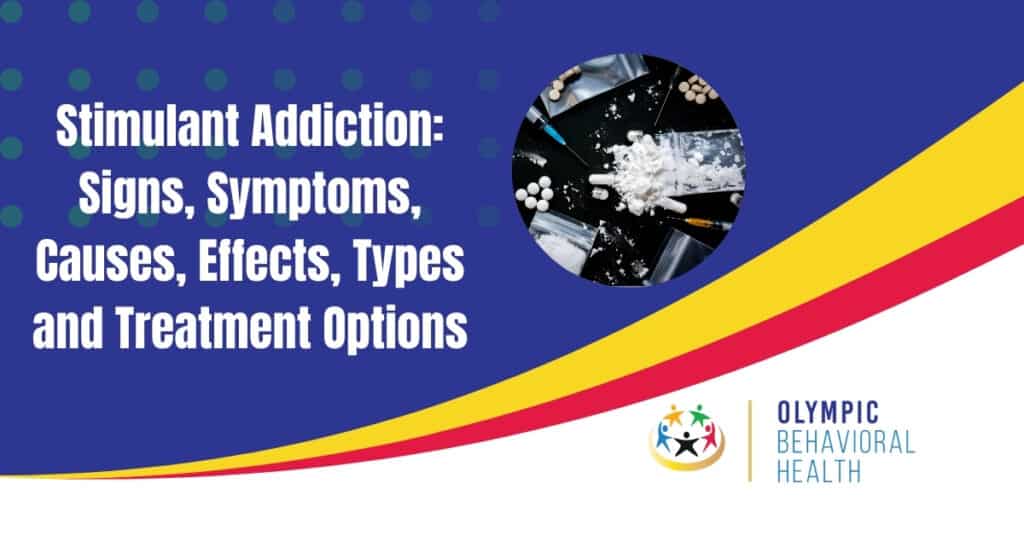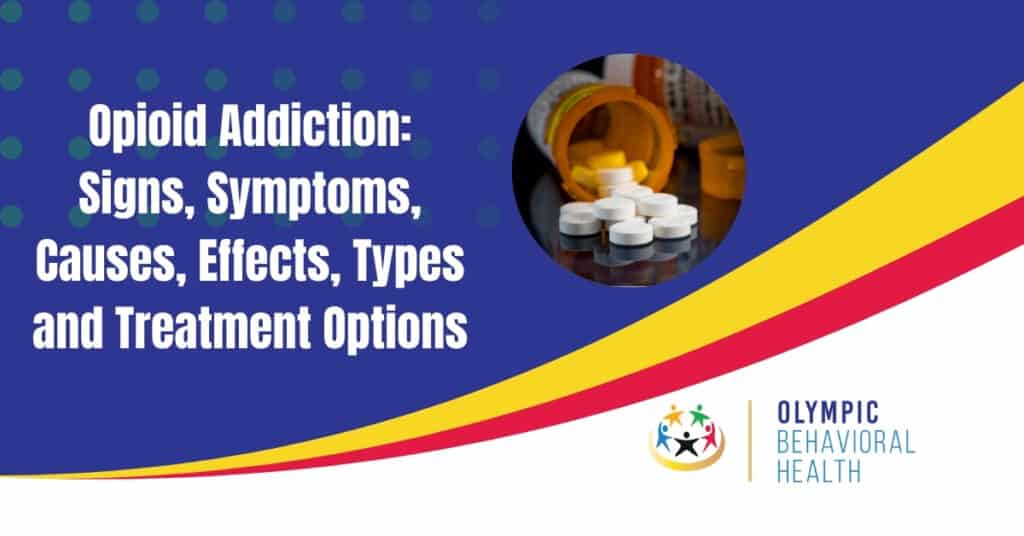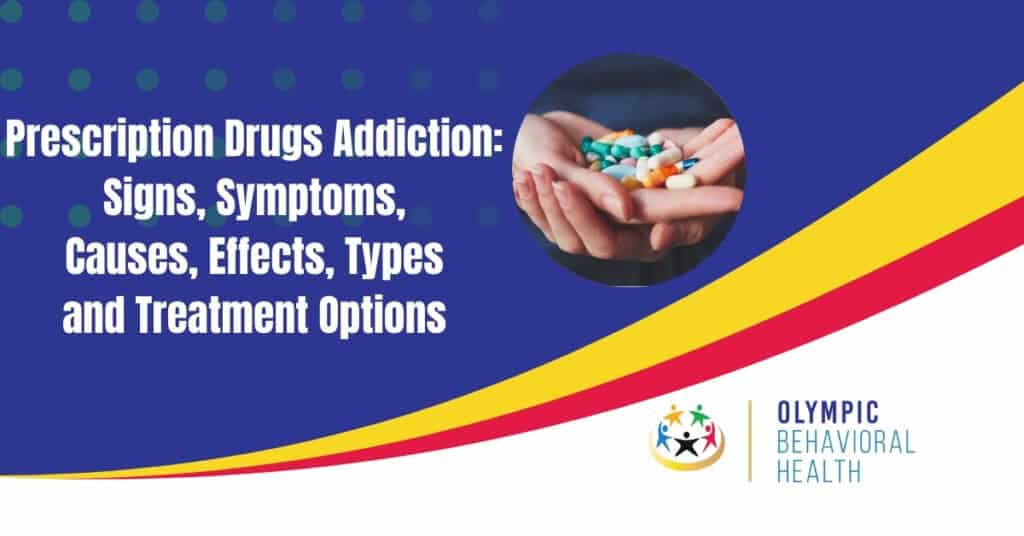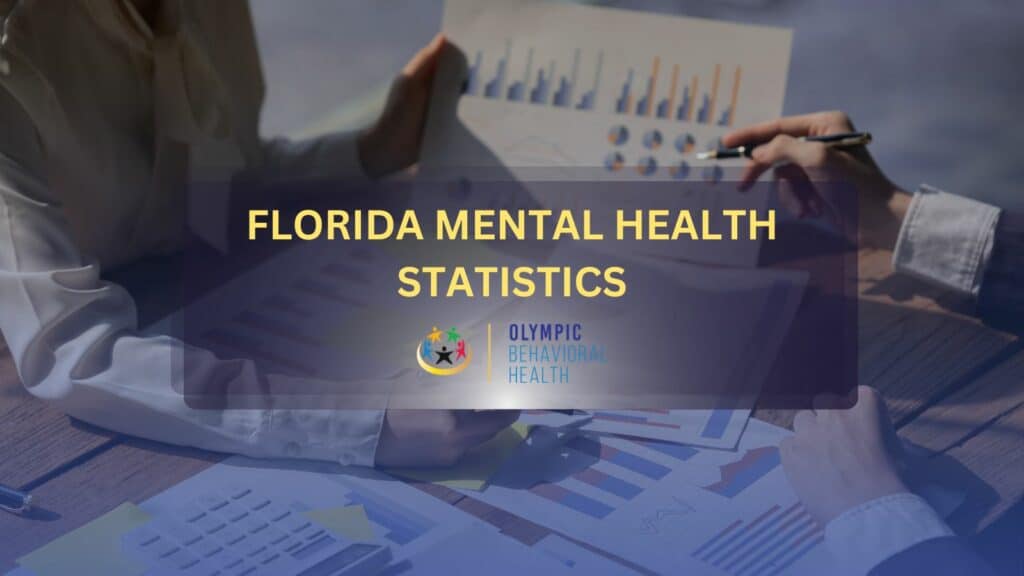Stimulant addiction refers to the excessive and harmful use of substances that boost central nervous system activity, making a person more alert and elevating their mood. It involves prescription medications, illegal drugs such as cocaine, and even over-the-counter supplements.
The signs and symptoms of stimulant addiction include increased heart rate, hyperactivity, and weight loss. Behavioral signs of stimulant addiction are restlessness, deceptive behavior, and withdrawal from social activities.
The causes of stimulant addiction are genetic predisposition, environmental influences, psychological factors, and neurobiological mechanisms. These complex interactions shape an individual’s susceptibility to developing addiction.
The effects of stimulant addiction manifest in severe physical, neurological, mental health, social, and economic problems. From cardiovascular complications to strained relationships, the impact is wide-ranging and profound.
Treatment options for stimulant addiction include detoxification, inpatient and outpatient rehabilitation, medication-assisted treatment, and behavioral therapies. Combining these approaches offers individuals comprehensive support on their journey to recovery.
What is a Stimulant addiction?
Stimulant addiction refers to the compulsive and harmful misuse of substances that increase central nervous system activity, leading to heightened alertness, energy, and mood. According to Buffo J. et al. 2024, “Stimulant Abuse: Signs, Effects, and Treatment Options,” commonly abused stimulants include prescription medications like Adderall and Ritalin, as well as illicit drugs such as cocaine and methamphetamine. Individuals often initially use stimulants for legitimate medical reasons or to enhance performance, but continued misuse can result in addiction.
Addiction to stimulants often develops as individuals build tolerance to the drug’s effects, requiring larger doses to achieve the desired effects. This cycle of increasing use leads to physical dependence, withdrawal symptoms upon cessation, and difficulty controlling or stopping drug use despite negative consequences.
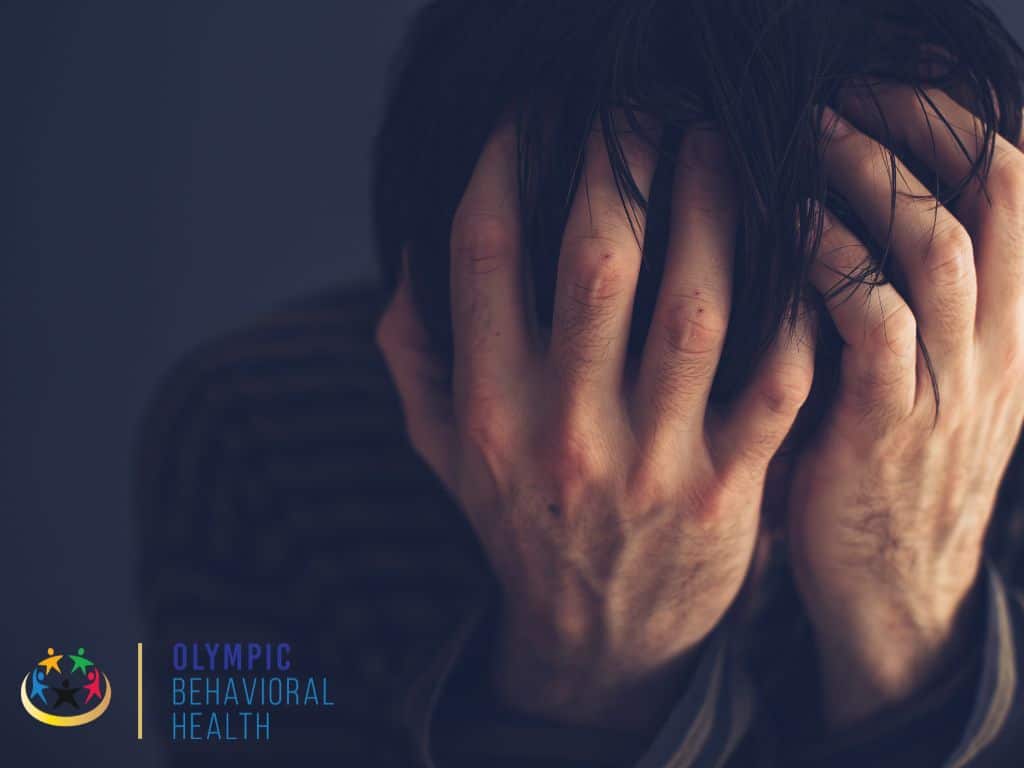
What are the Symptoms of a Stimulant addiction?
Stimulant addiction manifests through various signs and symptoms, indicating the compulsive and harmful misuse of these substances. Recognizing these signs is essential for early intervention and treatment.
Physical Signs
- Increased Heart Rate and Blood Pressure: Individuals addicted to stimulants often experience a noticeable increase in heart rate and blood pressure, which contribute to cardiovascular issues over time.
- Excessive Energy or Hyperactivity: A common symptom of stimulant addiction is a persistent state of excessive energy or hyperactivity, even in situations where it is inappropriate or harmful.
- Dilated Pupils: Pupil dilation is a physical response to stimulant use and is a visible indicator of someone under the influence of these drugs.
- Weight Loss and Loss of Appetite: Stimulant addiction leads to significant weight loss and a decreased appetite as a result of suppressed hunger signals and increased metabolism.
- Sweating and Increased Body Temperature: Excessive sweating and elevated body temperature are common physical symptoms associated with stimulant abuse, particularly during periods of intoxication or withdrawal.
- Insomnia or Disrupted Sleep Patterns: Chronic stimulant use often disrupts normal sleep patterns, leading to insomnia or difficulty maintaining regular sleep cycles.
Psychological Signs
- Mood Swings: Stimulant abuse causes significant fluctuations in mood, including periods of euphoria followed by irritability, agitation, or depression.
- Anxiety and Paranoia: Chronic stimulant use exacerbates feelings of anxiety and paranoia, leading to heightened vigilance, distrust of others, and paranoid delusions.
- Psychotic Symptoms: In severe cases, stimulant addiction precipitates psychotic symptoms, such as hallucinations, delusions, and disorganized thinking.
- Depression: Long-term stimulant abuse disrupts neurotransmitter function in the brain, leading to symptoms of depression, apathy, and emotional numbness.
- Cognitive Impairment: Stimulant addiction impairs cognitive function, including memory, attention, and decision-making abilities, making it difficult to concentrate or perform tasks effectively.
- Social Withdrawal: Addiction to stimulants causes individuals to withdraw from social interactions, hobbies, and responsibilities as they prioritize obtaining and using drugs.
- Compulsive Behavior: Stimulant addiction leads to obsessive behaviors, such as excessive cleaning, organizing, or repetitive actions, driven by heightened arousal and anxiety.
- Aggression and Hostility: Some individuals exhibit increased aggression, hostility, or violent behavior under the influence of stimulants, particularly during periods of intoxication or withdrawal.
What Are Warning Signs That A Loved One Has A Stimulant Addiction?
Stimulant addiction has severe consequences on both physical and mental health, as well as social and economic well-being. Here are some warning signs that indicate a loved one is struggling with stimulant addiction:
Physical Health Effects
- Cardiovascular Complications: Prolonged stimulant use leads to elevated blood pressure, irregular heart rhythms, and an increased risk of heart attack or stroke.
- Damage to Blood Vessels: Chronic stimulant abuse causes damage to blood vessels, resulting in conditions such as vasculitis and thrombosis.
- Gastrointestinal Issues: Stimulant addiction is associated with gastrointestinal problems, including abdominal pain, nausea, and digestive issues.
Neurological Impacts
- Cognitive Impairment: Long-term stimulant use disrupts neurological function, affecting decision-making, impulse control, and emotional regulation.
Mental Health Complications
- Increased Risk of Mood Disorders: Individuals with stimulant addiction are more likely to develop mood disorders such as depression and anxiety due to neurochemical imbalances and psychological stress.
- Precipitation of Psychotic Symptoms: Stimulant abuse triggers psychotic symptoms like hallucinations, delusions, and paranoia, particularly with drugs like methamphetamine.
Social and Interpersonal Consequences
- Strained Relationships: Stimulant addiction often leads to neglect of familial, occupational, and social responsibilities, resulting in conflict, alienation, and loss of trust.
Economic Burden
- Financial Costs: Stimulant addiction imposes significant costs on healthcare systems, employers, and society as a whole, including expenses related to medical treatment, emergency services, and law enforcement interventions. Additionally, productivity losses and disability claims undermine economic productivity and stability.
What Causes a Stimulant Addiction?
Stimulant addiction develops due to a combination of genetic, environmental, and psychological factors. Understanding these underlying causes is crucial for prevention, intervention, and effective treatment. Here, we explore each cause in detail:
Genetic Factors
Genetic predisposition plays a significant role in the development of stimulant addiction. Individuals with a family history of substance abuse disorders are at a higher risk of developing addiction themselves. Genetic variations influence how the brain responds to stimulant drugs, affecting factors such as reward processing, impulse control, and susceptibility to cravings, increasing vulnerability to stimulant addiction.
Environmental Influences
Environmental factors, including upbringing, peer influences, and exposure to stress or trauma, often contribute to the development of stimulant addiction. Early exposure to stimulant drugs, either through experimentation or prescription medication, increases the likelihood of later addiction.
Psychological and Behavioral Factors
Psychological factors, such as underlying mental health conditions or unresolved trauma, also contribute to the onset of stimulant addiction. Individuals turn to stimulant drugs as a form of self-medication to alleviate symptoms of depression, anxiety, or attention-deficit hyperactivity disorder (ADHD).
What are the Effects of Stimulants?
According to Williamson S. et al. 1997, “Adverse effects of stimulant drugs in a community sample of drug users,” stimulants have a broad range of adverse effects on an individual. Stimulants such as cocaine and methamphetamine and prescription medications like Adderall have diverse effects on the body and mind. Physiologically, they increase heart rate, blood pressure, and body temperature. Cocaine, for example, causes dilated pupils, while methamphetamine leads to significant weight loss due to suppressed appetite.
Psychologically, stimulants induce feelings of euphoria, heightened alertness, and enhanced mood. However, they also result in adverse effects like insomnia, restlessness, and potential long-term complications on cardiovascular and neurological health.
How Does A Stimulant Addiction Develop?
Stimulant addiction typically begins with initial exposure to the drug, either through prescription medication or recreational use at social gatherings. Here’s how the progression unfolds:
Initial Exposure
People encounter stimulants through prescribed medication for conditions like ADHD or narcolepsy or through recreational use at parties or clubs.
Neurobiological Changes
Stimulants affect the brain’s reward system, increasing dopamine and norepinephrine levels, leading to feelings of pleasure and euphoria.
Tolerance and Dependence
Continued use leads to tolerance, requiring higher doses for the same effects, and physical dependence, resulting in withdrawal symptoms when not using.
Psychological Factors
Stress, trauma, or underlying mental health issues also contribute to addiction by driving individuals to use stimulants as a coping mechanism.
Compulsive Use
Addiction progresses as individuals lose control over their stimulant use, prioritizing it over other responsibilities and activities despite negative consequences.
Cravings and Relapse
Intense cravings and withdrawal symptoms make quitting difficult, often leading to relapse without proper support and treatment.
What Are The Different Types Of Stimulant Addiction?
Stimulant addiction encompasses various substances that lead to dependence and misuse. These include prescription stimulants like Adderall and Ritalin, illicit drugs such as cocaine and methamphetamine, and over-the-counter supplements like caffeine pills. Each type of stimulant addiction presents unique challenges and risks, requiring tailored approaches to treatment and intervention.
Physical
Physical addiction to stimulants is characterized by the body’s reliance on these substances to function normally. Prolonged use leads to tolerance, dependence, and withdrawal symptoms when the drug is not consumed. Physical effects of stimulant addiction include increased heart rate, elevated blood pressure, weight loss, and disrupted sleep patterns.
Psychological
Psychological addiction to stimulants involves the craving and compulsive use of these substances despite negative consequences. Individuals often experience intense cravings, difficulty controlling their drug use, and withdrawal symptoms such as depression and anxiety when attempting to quit. Psychological effects of stimulant addiction include euphoria, heightened alertness, and mood swings.
What Is The Risk Of Stimulant Addiction?
Stimulant addiction poses significant risks to individuals’ health, well-being, and overall functioning. It leads to physical health complications, such as cardiovascular issues, neurological impacts, mental health disorders, social and interpersonal consequences, and economic burdens.
Can A Stimulant Addiction Lead To Death?
Yes, stimulant addiction can lead to death, primarily due to the following reasons:
- Overdose: Excessive use of stimulants like cocaine or methamphetamine often leads to overdose, causing respiratory failure, heart attack, or stroke, which can be fatal.
- Cardiovascular Complications: Long-term stimulant abuse also leads to cardiovascular issues such as elevated blood pressure, irregular heart rhythms, and an increased risk of heart attack or stroke, which can ultimately result in death.
- Psychological Disturbances: Stimulant addiction often co-occurs with mental health disorders like depression and anxiety, increasing the risk of suicidal thoughts and behaviors.
- Risky Behaviors: Individuals addicted to stimulants often engage in risky behaviors such as reckless driving or unsafe sexual practices, which can lead to fatal accidents or the transmission of infectious diseases.
Who is at Risk Of Developing a Stimulant Addiction?
Various factors contribute to the risk of developing a stimulant addiction. Genetic predisposition plays a significant role, with individuals having a family history of substance abuse disorders being at higher risk. Environmental influences, such as upbringing, peer pressure, and exposure to stress or trauma, also contribute. Psychological factors, including underlying mental health conditions and personality traits like impulsivity, further increase susceptibility. Additionally, social and cultural factors, such as societal norms and access to stimulant drugs, play a role in shaping attitudes and behaviors toward substance use.
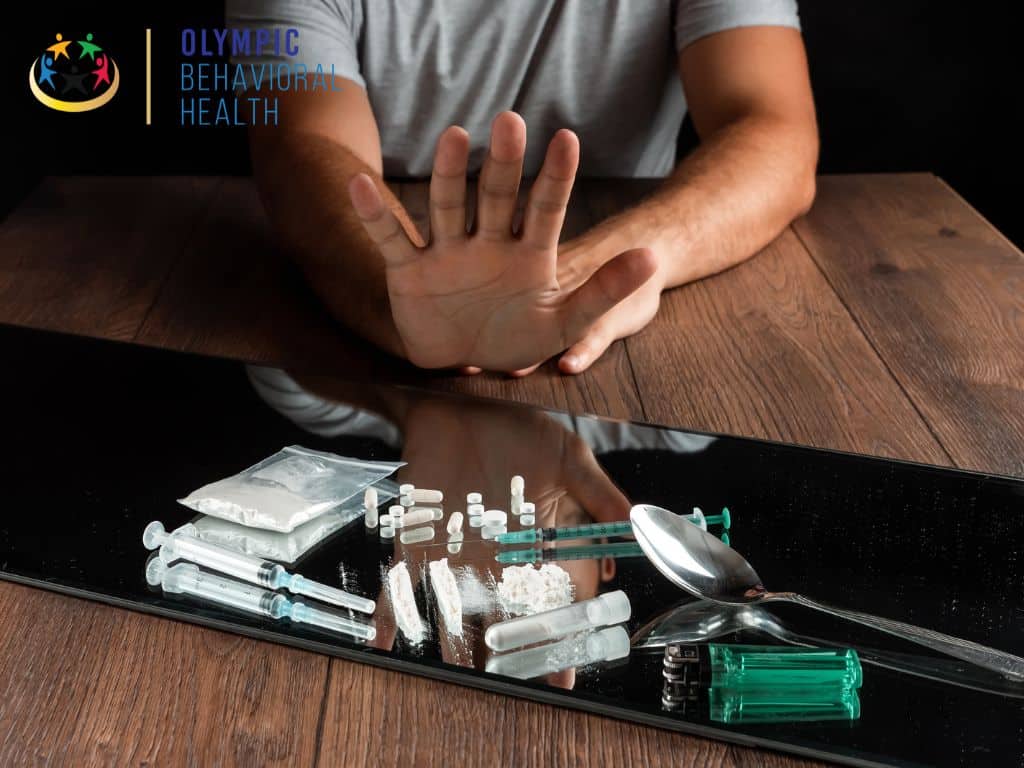
How Can You Prevent a Stimulant Addiction?
Preventing stimulant addiction involves various strategies aimed at addressing risk factors and promoting healthy behaviors. Education and awareness campaigns help individuals understand the risks associated with stimulant use and make informed decisions. Providing support and resources for coping with stress, trauma, and mental health issues can mitigate vulnerability to addiction.
Implementing policies to regulate access to stimulant drugs, especially among vulnerable populations like adolescents, reduces opportunities for misuse. Additionally, fostering a supportive environment and promoting positive social connections can strengthen protective factors against addiction.
What Substances Can Cause A Stimulant Addiction?
Stimulant addiction can develop from various substances that affect the central nervous system, leading to increased alertness and mood. Common substances known to cause stimulant addiction include:
Medication
- Adderall: Adderall is a prescription medication containing amphetamine and dextroamphetamine. It is commonly prescribed to treat attention deficit hyperactivity disorder (ADHD) and narcolepsy. Adderall increases dopamine and norepinephrine levels in the brain, leading to heightened alertness and concentration. However, misuse of Adderall often leads to tolerance, dependence, and addiction.
- Ritalin: Ritalin, also known as methylphenidate, is another prescription stimulant used to treat ADHD and narcolepsy. Like Adderall, Ritalin increases dopamine and norepinephrine levels in the brain. Misuse of Ritalin often leads to addiction, especially when taken in higher doses or via non-prescribed routes.
Cocaine
Cocaine is a powerful illicit stimulant derived from the coca plant. It produces intense euphoria and energy by blocking the reuptake of dopamine in the brain. Cocaine addiction develops rapidly due to its highly addictive nature and short-lived effects, leading to compulsive drug-seeking behavior and significant health risks.
Learn more about Cocaine Addiction
Crack Cocaine
Crack cocaine is a smokeable form of cocaine that produces a rapid and intense high. It is highly addictive due to its potency and affordability. Crack cocaine addiction leads to severe physical and psychological health complications, as well as social and legal problems.
Caffeine
Caffeine is a widely consumed stimulant in coffee, tea, energy drinks, and some medications. While caffeine addiction is generally less severe than other stimulant addictions, excessive consumption often leads to dependence, tolerance, and withdrawal symptoms.
Methamphetamine
Methamphetamine, commonly known as meth, is a potent illicit stimulant that increases dopamine levels in the brain. Methamphetamine addiction causes severe physical and mental health issues, including psychosis, cognitive impairment, and cardiovascular problems.
Learn more about Methamphetamine Addiction
Kratom
Kratom is a plant-based substance that acts as a stimulant at low doses and a sedative at higher doses. While less potent than other stimulants, kratom still leads to dependence and addiction, particularly with prolonged or heavy use.
What Are The Withdrawal Effects Of A Stimulant Addiction?
Withdrawal from a stimulant addiction is challenging and involves various physical and psychological symptoms. Some common withdrawal effects include:
- Fatigue and lethargy
- Increased appetite
- Disturbed sleep patterns
- Depression and mood swings
- Anxiety and irritability
- Intense drug cravings
- Difficulty concentrating
- Agitation and restlessness
- Suicidal thoughts or behaviors
How Do You Treat A Stimulant Addiction?
Treating stimulant addiction requires a comprehensive approach that addresses the physical, psychological, and social aspects of the disorder, as discussed by Schuckit, M. A. et al. 1994, “The treatment of stimulant dependence.” Several treatment options are available to help individuals overcome stimulant addiction and achieve long-term recovery.
What Treatment Options Are There For A Stimulant Addiction?
Detoxification (Detox)
Detoxification, or detox, is often the first step in treating stimulant addiction. Detox involves the process of clearing the body of stimulant substances while managing withdrawal symptoms in a safe and supervised environment. Medical professionals administer medications to alleviate withdrawal symptoms and ensure the individual’s safety during the detox process.
Inpatient Rehabilitation
Inpatient rehabilitation, also known as residential treatment, provides intensive, round-the-clock care for individuals struggling with stimulant addiction. During inpatient rehab, individuals reside in a structured treatment facility and participate in a comprehensive recovery program tailored to their needs. Treatment includes individual counseling, group therapy, behavioral therapies, medication-assisted treatment (MAT), recreational activities, and life skills training.
Outpatient Rehabilitation
Outpatient rehabilitation programs offer flexible treatment options for individuals with mild to moderate stimulant addiction who do not require 24/7 supervision. Outpatient programs allow individuals to attend therapy sessions and other treatment activities while living at home or in a sober living environment. Outpatient rehab typically involves regular therapy sessions, group counseling, educational workshops, and support group meetings.
Medication-Assisted Treatment (MAT)
Medication-assisted treatment (MAT) combines medications with behavioral therapy and counseling to treat stimulant addiction effectively. While there are currently no FDA-approved medications specifically for treating stimulant addiction, medications are used to manage co-occurring mental health conditions or alleviate withdrawal symptoms.
Behavioral Therapies
Behavioral therapies play a crucial role in treating stimulant addiction by addressing the underlying psychological factors contributing to substance abuse. Cognitive-behavioral therapy (CBT), contingency management, motivational interviewing, and dialectical behavior therapy (DBT) are among the most commonly used behavioral therapies for stimulant addiction. These therapies help individuals identify and change dysfunctional thought patterns, develop coping skills, manage cravings and triggers, and cultivate healthier behaviors and attitudes toward drug use.
How Do You Prevent A Stimulant Relapse?
Preventing a relapse from stimulant addiction involves adopting various strategies to maintain sobriety and manage triggers effectively. Some key approaches to preventing relapse include:
- Engaging in ongoing therapy and support groups to address underlying issues and learn coping skills.
- Developing a strong support network of friends, family, and peers who understand and support recovery efforts.
- Identifying and avoiding high-risk situations and environments associated with stimulant use.
- Practicing self-care techniques such as regular exercise, healthy eating, and stress management to promote overall well-being.
- Utilizing relapse prevention techniques such as mindfulness, distraction techniques, and developing an emergency plan.
- Seeking immediate help and support if experiencing cravings or urges to use stimulants again.
1. What are the most common stimulants that people get addicted to?
Commonly abused stimulants include prescription medications like Adderall and Ritalin, as well as illicit drugs such as cocaine and methamphetamine.
2. Are there any genetic factors that contribute to stimulant addiction?
Genetic predisposition plays a significant role in the development of stimulant addiction. Individuals with a family history of substance abuse disorders are at a higher risk.
3. Can stimulant addiction affect relationships and social interactions?
Stimulant addiction strains relationships and leads to social dysfunction. Individuals often withdraw from social activities, engage in deceptive behaviors, and prioritize obtaining and using stimulants over maintaining relationships.
4. What are some of the economic consequences of stimulant addiction?
The economic impact of stimulant addiction includes expenses related to medical treatment, emergency services, law enforcement interventions, productivity losses, absenteeism, and disability claims. These costs undermine economic productivity and stability.
5. Is medication-assisted treatment (MAT) effective for treating stimulant addiction?
While there are currently no FDA-approved medications specifically for treating stimulant addiction, MAT is used to manage co-occurring mental health conditions or alleviate withdrawal symptoms, improving treatment outcomes as part of a comprehensive plan.

Share This Post
